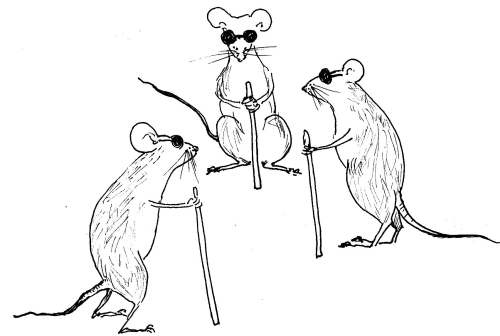Dark, Disturbing and Somewhat Horrible, the History and Origins of Nursery Rhymes #1: Three Blind Mice

Source
Have you ever wondered where the darling, sweet nursery rhyme you read or sing to your child came from? Where it originated or the story behind it? Have you ever really read the words? If you have, you will no doubt realize that most of them are in fact... Horrible!
Each week I’ll be looking at a different nursery rhyme and sharing some interesting facts… I hope I don’t put you off singing them 😳
Source
Three blind mice, three blind mice,
See how they run, see how they run.
They all ran after the farmer's wife,
Who cut off their tails with a carving knife,
Did you ever see such a thing in your life?
As three blind mice.
Now these words alone are quite horrid when you think about it. Even if you don’t like mice, would you want to cut off their tails? But what is the story behind it?
Historians often like to trace the heritage of nursey rhymes back to an important event in time and “Three Blind Mice” is no exception.
Although the author of this nursery rhyme remains unknown, it first appeared in print in 1609. The mice are believed to be three Protestant loyalists who were accused of plotting against Queen Mary I (1516–1558), also known as “Bloody Mary” due to her penchant for torture including burning of hundreds of Protestants at the stake as she worked to return England to Catholicism.
Needless to say, these 3 men were also burned alive at the stake. Known as the Oxford Martyrs, Ridley, Latimer and Cranmer where not blind in the true sense of the word, but this referred to their Protestantism.
Wow! Sweet dreams 😴
Anyway, I hope you enjoyed this week’s look at a well-known nursery rhyme, well perhaps “enjoyed” isn’t the right word… I hope you found this interesting and I’m looking forward to sharing more next week 😊


Original content by @redwellies
Reference: Opie and P. Opie, The Oxford Dictionary of Nursery Rhymes (Oxford: Oxford University Press, 1951, 2nd edn., 1997), p. 306

